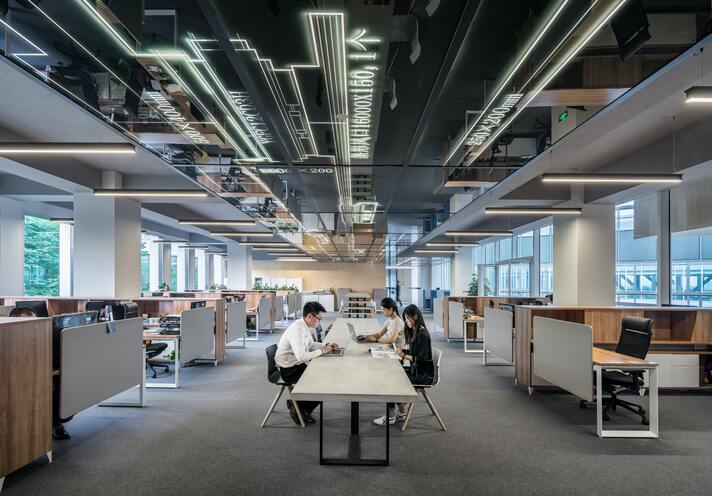Unprecedented times like the Covid-19 pandemic, have accelerated the call of adoption of tech-driven smart buildings faster than ever. Advances like artificial intelligence, 5G, cloud technology, big data, the internet of things, and integrated solutions approach are aligning reality with user expectations resulting in office spaces becoming sustainable and at the same time, welcoming innovation and the creation of new opportunities. According to predictions, there will be over four billion connected IoT devices in commercial smart buildings by 2028. These buildings will be powered by the latest telecommunications infrastructures, emerging technologies, and connected solutions. While technology takes the center stage, tech-led innovations are reimagining the way buildings, especially workspaces, are being planned and managed. Digital adoption in workplaces to create a smart building ecosystem goes a long way in optimizing power consumption and creating sustainable buildings for a better future.
Creating A Better Future
With the proliferation of hybrid workplaces, the commercial space is evolving and excited to quickly provide better solutions to meet people and organizational needs. The digitization of the workplace in which technologies are used to make the work environment intelligent and adaptable to company workflows is expanding its footprints. Alongside, smart building transformation and automation comes alignment of the building ecosystem with sustainability and holistic building goals.
A fundamental factor in the creation of smart buildings is the inclusion of Power-over-Ethernet (PoE) and the Internet of Things (IoT) that connect building systems and create more energy-efficient and sustainable spaces. The idea behind incorporating technologies in the workplace is to unify operations under one system and empower that system with machine-learning capabilities. Industries ranging from healthcare, education, retail, lifestyle to hospitality are benefitting from the proliferation of smart workspace buildings resulting in making a difference in energy consumption which reciprocates in saving billions globally.
To create sustainable workplaces for businesses, energy efficiency is essential and hence efficient lighting & environment management solutions become unavoidable. An environment that is energy-efficient, automated, and intelligent can be created by bringing IoT, Machine Learning, and sensors in unison. Using these technologies, a conducive workplace for both business and employees can be created with smart lighting, sound masking, and air quality monitoring among other changes. Solutions like nhance Smart Lighting & Environment Control System, for example, help in transforming workspaces into intuitively energy efficient.
Office of Tomorrow
In deciding whether to downsize the office space in favour of more flexible working, optimizing office space is more important than ever. Smarter space management holds the key to turning workspaces into efficiency, productivity, and safety powerhouse. Built by joining up a system that allows the organizations to monitor and automate key processes, including thermostat, HVAC, electrical, lighting, shading, security systems, while keeping the energy conservation and environment in check.
Evolving a fixed office space into a flexible workplace with AI-based space management solutions allows the organizations to monitor and automate key processes, including thermostat, HVAC, electrical, lighting, shading, security systems, while keeping the energy conservation and environment in check. It helps in better planning and predicting the future while also helping in supervising and strategizing the hybrid needs of the organizational workforce.
However, the creation of smart commercial spaces is also guided by the demand for reduced management costs, the possibility of offering new and unusual experiences, and, above all, the need to create more productive workplaces. Today, digital communication, transparency, and quality control are on the checklist and automatically expected from every commercial building. In fact, we imagine a future in which an office building gathers information while allowing for optimization of energy consumption as part of the growing awareness around sustainability.
A Look Into The Future
Despite some of the hyperbole, the ‘workplaces’ do need to smarten up and tackle some of the very real challenges presented by the pandemic. In the course of making buildings with digital solutions, the landscape of workspaces will also change completely, making them smarter and more attractive. Furthermore, smartly managed and more connected spaces are the future of the sustainable built environment.
Contrary to popular belief that digital workplace transformations work only for large organizations with global teams, even small businesses can also be benefited when technology and the way of living in these spaces are melded into one. But these workspace advances will evolve only through the adoption of emerging technologies to create buildings that are digital as well as sustainable.
We at nhance are consciously bringing solutions for smart building automation and intelligent transformation that have sustainability at the core. To discover how selecting smart building technology and sustainable solutions can lead your workspace into green building, reach out to us at nhance.ai.








